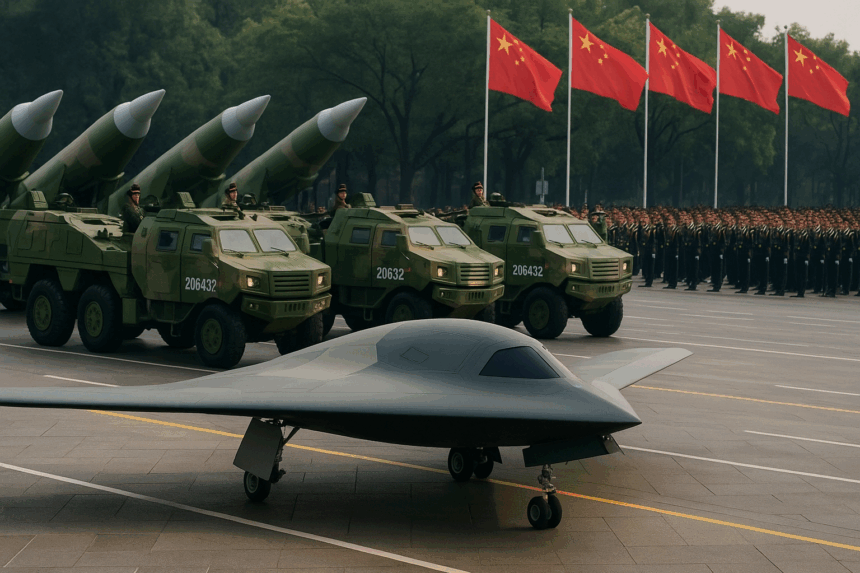China is preparing its most advanced military hardware at its annual Victory Parade. Notables include an impressive array of Victory Parade weapons. This event commemorates the 80th anniversary of Japan’s defeat in World War II. The highly choreographed event, set in Tiananmen Square, will feature more than 10,000 soldiers. Also, it will display cutting-edge defense systems designed to project China’s military-technological power.
What’s Happening & Why This Matters
A Political-Military Presentation
The Victory Parade serves both as a remembrance and a demonstration of force. President Xi Jinping is expected to attend alongside international guests, including Russian President Vladimir Putin. While the sheer number of personnel on display is noteworthy, the true spotlight rests on the arsenal. This arsenal underscores China’s rapid advances in aerospace, naval, and missile technologies.

Loyal Wingman Drone Enters the Stage
Leaked drills ahead of the parade revealed the FH-97 “loyal wingman” drone, a stealth, single-engine aircraft. It operates alongside manned jets and is marketed as China’s first combat-ready stealth drone. The FH-97 can perform reconnaissance, electronic jamming, and coordinated strike missions. If formally unveiled, it would also be the first operational loyal wingman drone in the world. This would underscore Beijing’s ambitions in next-generation warfare. Other unmanned aerial and underwater drones could also make appearances. This reflects a strategy focused on surveillance dominance and autonomous combat support.
Hypersonic Weapons on Display?

China has previously demonstrated the DF-17 hypersonic missile, first unveiled during the 70th anniversary parade in 2019. These weapons travel at speeds exceeding several thousand kilometres per hour, making them difficult to track and intercept. Reports suggest China is further developing advanced intercontinental ballistic missiles (ICBMs). These include the DF-31AG with a range of more than 11,000 km and the DF-41. The DF-41 is capable of reaching up to 15,000 km — enough to strike any target in the continental United States. Whether these weapons appear at this year’s parade remains uncertain. However, their rumored presence reinforces China’s long-range strike capability.
Anti-Ship Power and Naval Expansion
China has been rapidly expanding its naval capacity. By 2024, its fleet reportedly included 12 nuclear-powered and 48 diesel-powered submarines. It is also developing next-generation ballistic missile subs. Anti-ship missile systems are expected to feature prominently. These systems are designed to neutralize aircraft carriers and large naval fleets. This technology directly addresses U.S. naval dominance in the Pacific. It signals Beijing’s intent to safeguard maritime interests and assert control in contested waters.
TF Summary: What’s Next
The Victory Parade is more than a military pageant; it is a message to both domestic and global audiences. Domestically, it reinforces nationalism and showcases China’s military achievements under Xi Jinping. Internationally, it sends a reminder that China is positioning itself as a leader in stealth drones, hypersonic systems, and naval warfare technology.
As tensions build in the South China Sea, Taiwan Strait, and beyond, defense communities are painfully aware of the situation. They hypothesize assess to these weapons changes the balance of power. The event illustrates that China is not only investing heavily in traditional deterrence. It is also narrowing perspective onnext-era warfare technologies.
— Text-to-Speech (TTS) provided by gspeech


